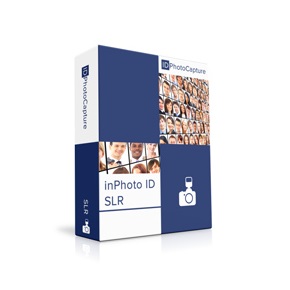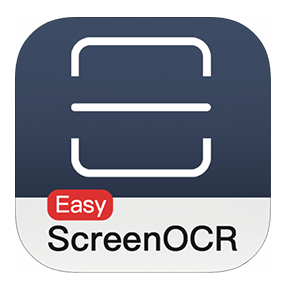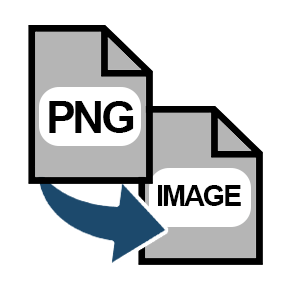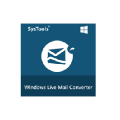Download Layout Indicator 2 full version program free setup for Windows. In today’s world, communicating in multiple languages is a powerful and essential skill. This obviously applies to writing as well, and most Windows users already know that they have the possibility to easily switch their keyboard layout. For Windows 8 and 10, the shortcut is Win + Space, while those who still use Windows 7 have to press Left Alt + Shift.
Layout Indicator Overview
The Layout Indicator stands as a crucial feature in user interface design, providing users with visual cues about the current layout or configuration of a software application or digital environment. In the realm of graphic design and software development, the Layout Indicator serves as a navigational aid, offering users insights into the arrangement of elements, panels, or modes within the interface. It is a visual representation that highlights the specific layout or mode the user is currently in, ensuring clarity and reducing the potential for confusion. The significance of the Layout Indicator becomes particularly pronounced in complex applications where users may navigate through various modes or workspaces. In such scenarios, this indicator becomes a pivotal element in enhancing user experience, enabling individuals to swiftly identify their location within the software and providing an immediate understanding of the available functionalities.
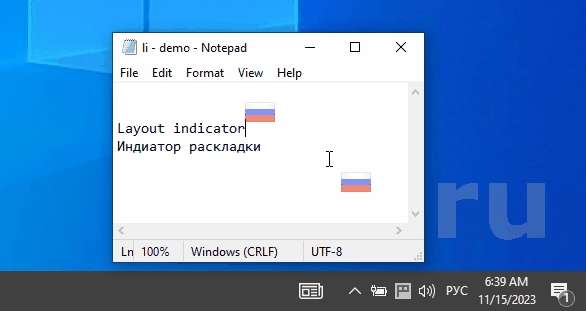
In practical terms, the Layout Indicator is often manifested as a visual element within the user interface, such as an icon, color-coded indicator, or text label. For example, a tabbed interface might use tabs to represent different layouts, with the active tab serving as the indicator of the current layout. In more dynamic applications or operating systems, this indicator might adapt in real-time as users switch between different views, providing a continuous and intuitive reference point. Overall, the Layout Indicator plays a key role in fostering user comprehension, reducing cognitive load, and facilitating seamless navigation within software interfaces. Its implementation reflects a commitment to user-centric design principles, ensuring that users can effortlessly grasp the context of their interactions within a digital environment. Whether in graphic design software, productivity applications, or complex software suites, the Layout Indicator significantly contributes to a more user-friendly and intuitive user experience.
Features
- Visual Representation: The Layout Indicator provides a visual representation within a user interface, offering a clear and immediate indication of the current layout or configuration.
- User Interface Design: It is a crucial feature in user interface design, contributing to the overall clarity and intuitiveness of the software or application.
- Navigational Aid: The Layout Indicator serves as a navigational aid, assisting users in understanding their location within the software and the available functionalities.
- Reduced Confusion: By providing visual cues, the indicator helps reduce potential confusion, especially in complex applications with multiple layouts or modes.
- Adaptability: The Layout Indicator is adaptable, often changing in real-time as users switch between different views or modes, ensuring continuous and intuitive reference points.
- Mode Identification: It helps users identify the specific mode or workspace they are currently in, enhancing their awareness of their digital environment.
- Tabbed Interface: In tabbed interfaces, the Layout Indicator may be represented by active tabs, offering users a tangible and visual means of identifying the current layout.
- Color-Coded Indicator: The indicator may use color coding to convey information, with specific colors representing different layouts or modes for quick and easy identification.
- Text Labels: In addition to visual elements, the Layout Indicator may incorporate text labels, providing users with explicit information about the current layout.
- Complex Applications: It becomes particularly significant in complex applications where users navigate through various modes, ensuring a seamless user experience.
- Dynamic Adaptation: The Layout Indicator dynamically adapts to changes in the interface, reflecting the real-time movements or shifts in the user’s interaction.
- Workspace Recognition: It aids users in recognizing different workspaces within an application, facilitating a smooth transition between tasks.
- Customization Options: Some applications allow users to customize the appearance or behavior of the Layout Indicator to align with their preferences or workflow.
- Multi-Panel Layouts: In applications with multi-panel layouts, the indicator may highlight the active panel, providing a visual guide in intricate interfaces.
- Task Switching: It streamlines task switching by offering a quick and accessible reference point for users to identify and switch between different layouts.
- Intuitive Design Principles: The Layout Indicator aligns with intuitive design principles, contributing to a positive user experience and ease of interaction.
- Efficiency Enhancement: Its presence enhances efficiency by reducing the time users would spend deciphering the current layout or configuration.
- Continuous Visibility: The indicator ensures continuous visibility, maintaining a persistent presence to aid users throughout their interaction with the application.
- Iconic Representation: In some cases, the Layout Indicator may use iconic representations, such as symbols or icons, to convey information concisely.
- Global Context Awareness: It fosters global context awareness, allowing users to understand their position within the overall structure of the application.
- Feedback Mechanism: The indicator serves as a feedback mechanism, acknowledging users’ actions and providing a tangible response to layout changes.
- Accessibility: Its implementation considers accessibility, ensuring that the visual representation is clear and discernible for all users, including those with visual impairments.
- Responsive Design: The Layout Indicator is part of responsive design practices, adapting to different screen sizes and resolutions for a consistent user experience.
- Integration with Workflows: It seamlessly integrates with user workflows, supporting a natural and unobtrusive interaction with the application.
- Quick Reference Point: Users can quickly reference the indicator for orientation, making informed decisions about their actions within the software.
- Task-Oriented Design: The Layout Indicator aligns with task-oriented design principles, supporting users in achieving their objectives efficiently.
- Desktop and Web Applications: It is applicable to both desktop and web applications, ensuring a consistent user experience across different platforms.
- Undo and Redo Actions: In some cases, the indicator may incorporate undo and redo actions, allowing users to revert to previous layouts effortlessly.
- Minimal Cognitive Load: Its presence minimizes cognitive load, enabling users to focus more on their tasks and less on deciphering the interface.
Technical Details
- Software Name: Layout Indicator for Windows
- Software File Name: Layout-Indicator-2.5.5.rar
- Software Version: 2.5.5
- File Size: 1.43 MB
- Developers: soft
- File Password: 123
- Language: Multilingual
- Working Mode: Offline (You donÆt need an internet connection to use it after installing)
System Requirements
- Operating System: Win 7, 8, 10, 11
- Free Hard Disk Space:
- Installed Memory: 1 GB
- Processor: Intel Dual Core processor or later
- Minimum Screen Resolution: 800 x 600
What is the latest version of Layout Indicator?
The developers consistently update the project. You can view the most recent software update on their official website.
Is it worth it to install and use Software Layout Indicator?
Whether an app is worth using or not depends on several factors, such as its functionality, features, ease of use, reliability, and value for money.
To determine if an app is worth using, you should consider the following:
- Functionality and features: Does the app provide the features and functionality you need? Does it offer any additional features that you would find useful?
- Ease of use: Is the app user-friendly and easy to navigate? Can you easily find the features you need without getting lost in the interface?
- Reliability and performance: Does the app work reliably and consistently? Does it crash or freeze frequently? Does it run smoothly and efficiently?
- Reviews and ratings: Check out reviews and ratings from other users to see what their experiences have been like with the app.
Based on these factors, you can decide if an app is worth using or not. If the app meets your needs, is user-friendly, works reliably, and offers good value for money and time, then it may be worth using.
Is Layout Indicator Safe?
Layout Indicator is widely used on Windows operating systems. In terms of safety, it is generally considered to be a safe and reliable software program. However, it’s important to download it from a reputable source, such as the official website or a trusted download site, to ensure that you are getting a genuine version of the software. There have been instances where attackers have used fake or modified versions of software to distribute malware, so it’s essential to be vigilant and cautious when downloading and installing the software. Overall, this software can be considered a safe and useful tool as long as it is used responsibly and obtained from a reputable source.
How to install software from the WinRAR file?
To install an application that is in a WinRAR archive, follow these steps:
- Extract the contents of the WinRAR archive to a folder on your computer. To do this, right-click on the archive and select ”Extract Here” or ”Extract to [folder name]”.”
- Once the contents have been extracted, navigate to the folder where the files were extracted.
- Look for an executable file with a .exeextension. This file is typically the installer for the application.
- Double-click on the executable file to start the installation process. Follow the prompts to complete the installation.
- After the installation is complete, you can launch the application from the Start menu or by double-clicking on the desktop shortcut, if one was created during the installation.
If you encounter any issues during the installation process, such as missing files or compatibility issues, refer to the documentation or support resources for the application for assistance.
Can x86 run on x64?
Yes, x86 programs can run on an x64 system. Most modern x64 systems come with a feature called Windows-on-Windows 64-bit (WoW64), which allows 32-bit (x86) applications to run on 64-bit (x64) versions of Windows.
When you run an x86 program on an x64 system, WoW64 translates the program’s instructions into the appropriate format for the x64 system. This allows the x86 program to run without any issues on the x64 system.
However, it’s important to note that running x86 programs on an x64 system may not be as efficient as running native x64 programs. This is because WoW64 needs to do additional work to translate the program’s instructions, which can result in slower performance. Additionally, some x86 programs may not work properly on an x64 system due to compatibility issues.
What is the verdict?
This app is well-designed and easy to use, with a range of useful features. It performs well and is compatible with most devices. However, may be some room for improvement in terms of security and privacy. Overall, it’s a good choice for those looking for a reliable and functional app.
Download Layout Indicator 2 Latest Version Free
Click on the button given below to download Layout Indicator free setup. It is a complete offline setup for Windows and has excellent compatibility with x86 and x64 architectures.
